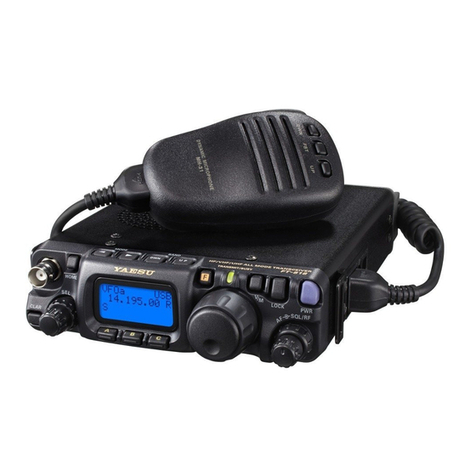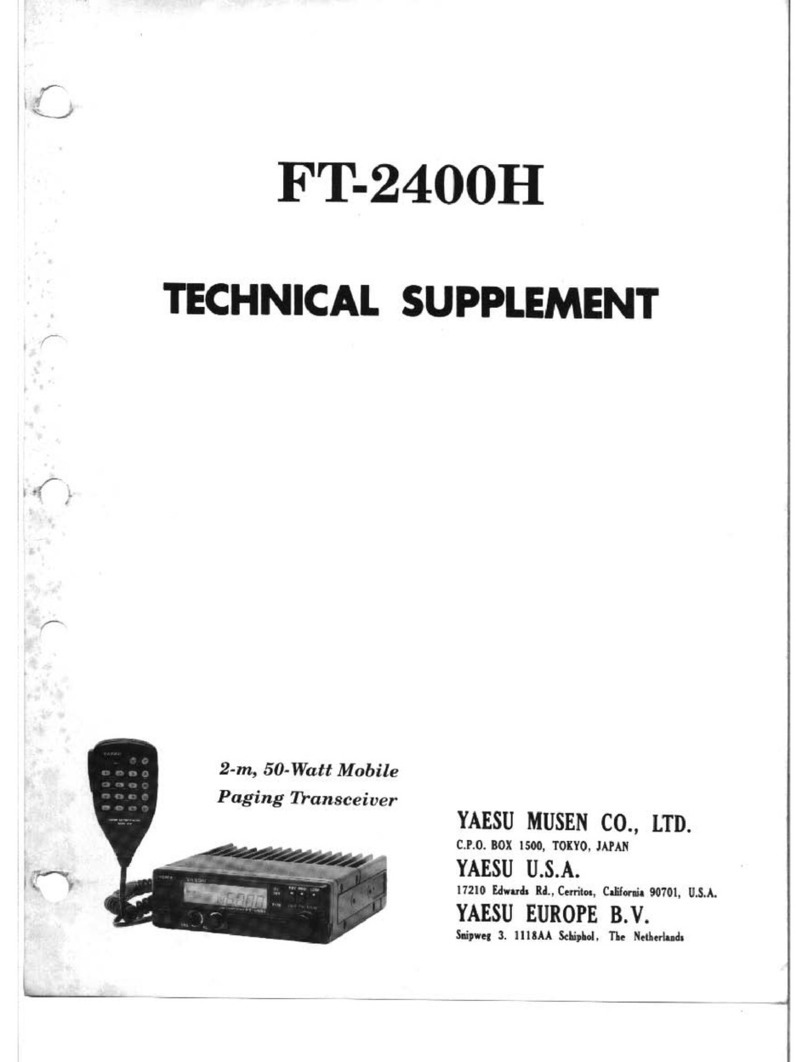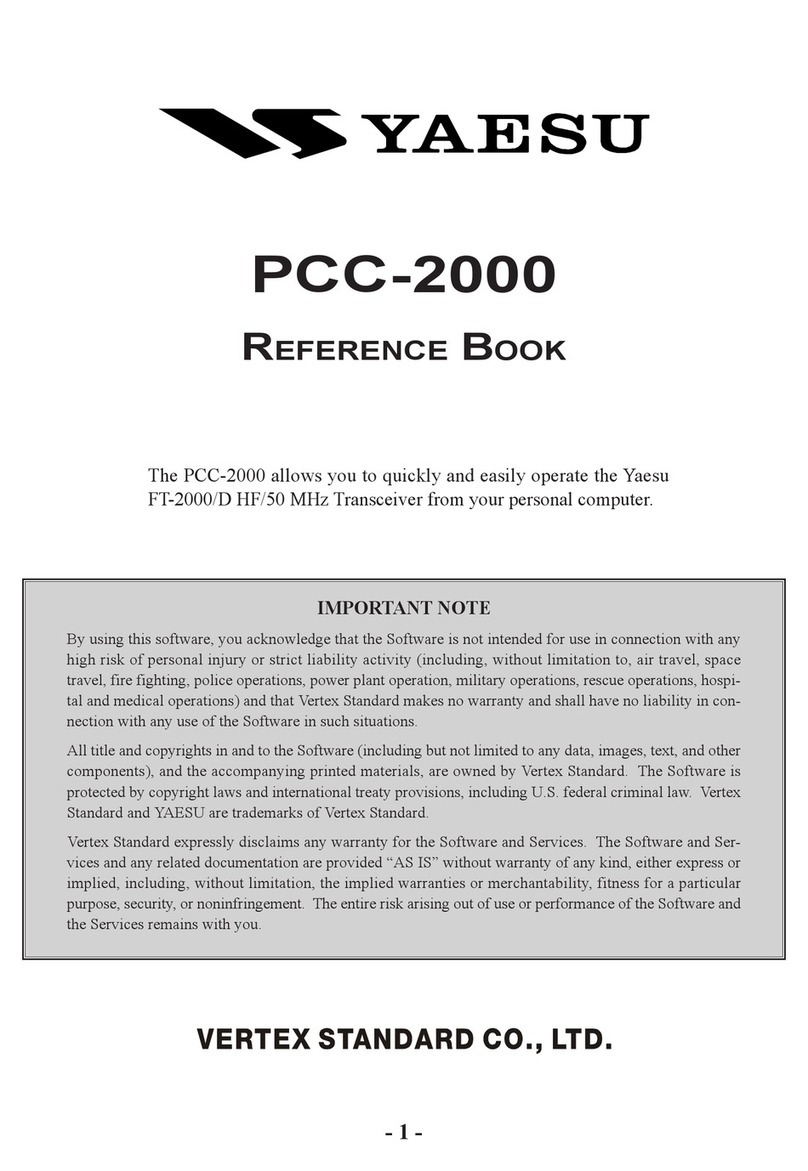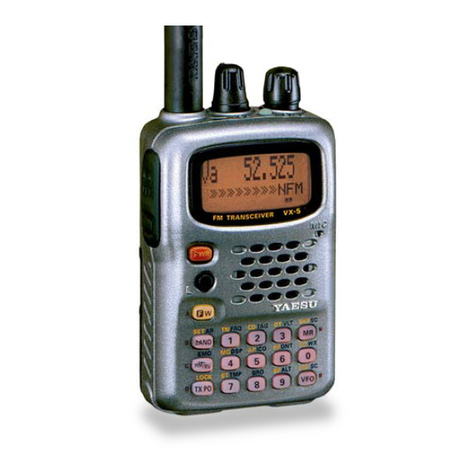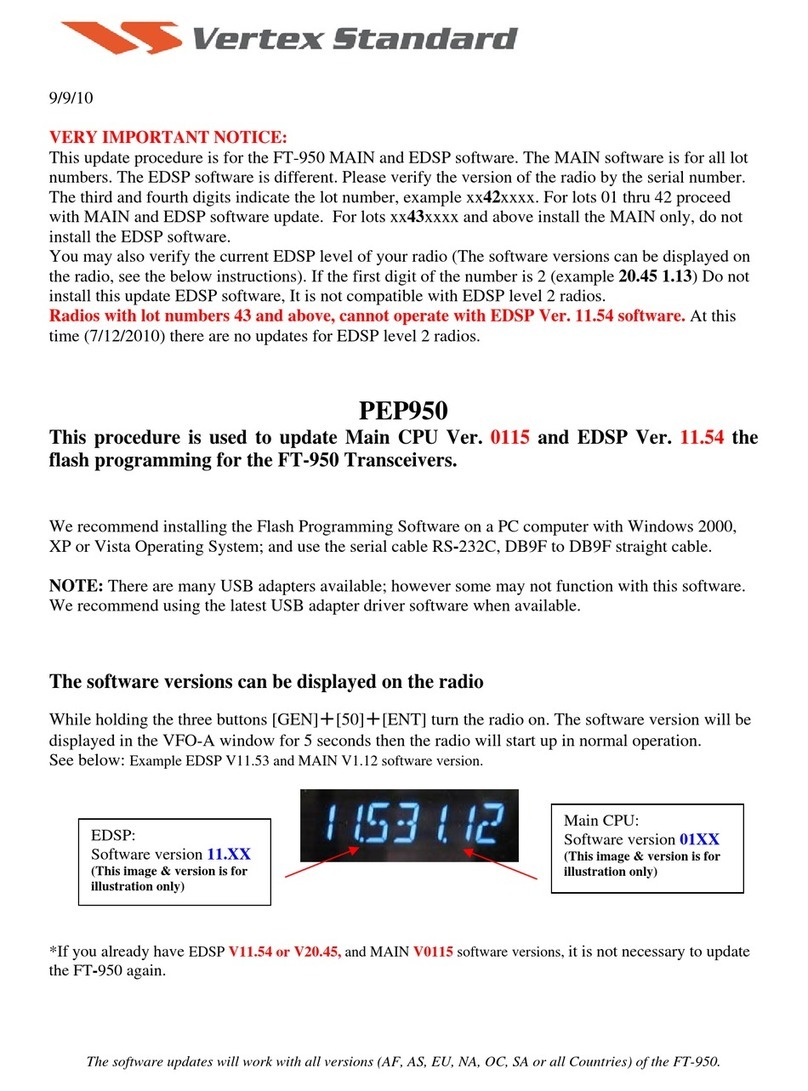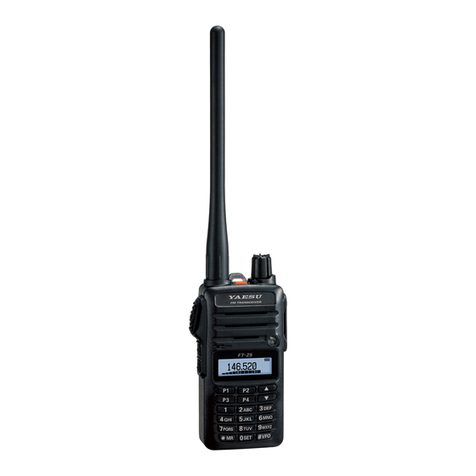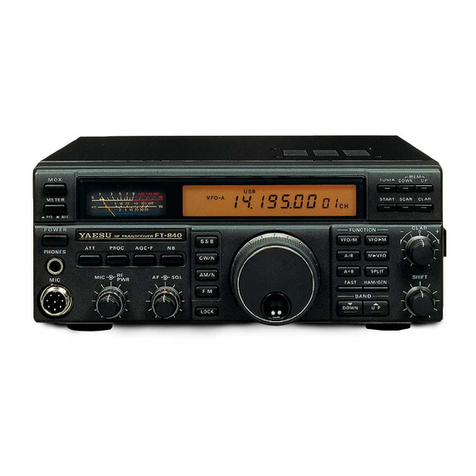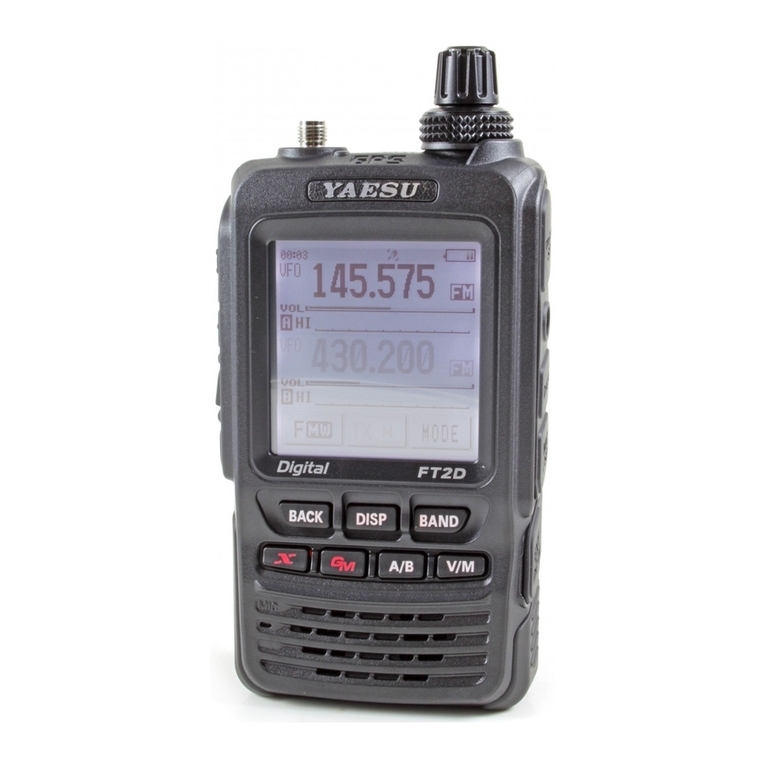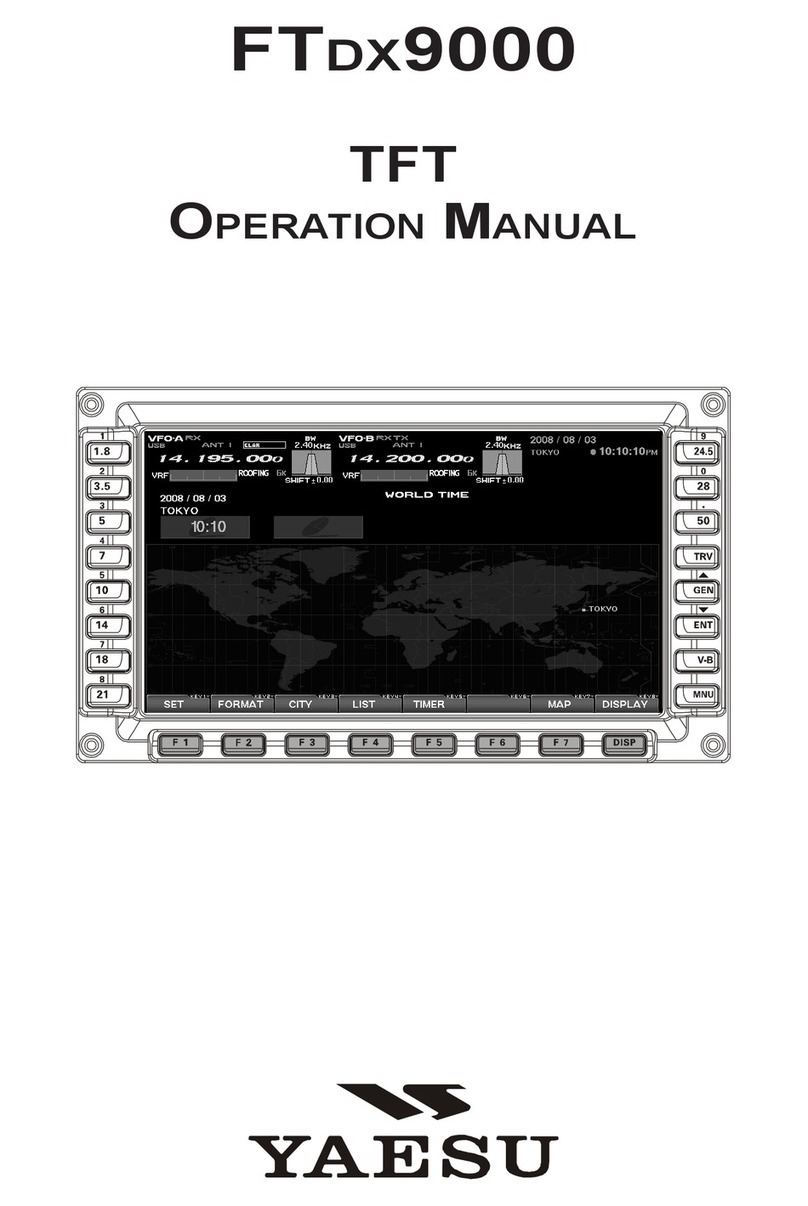
Specification ........................................................................................................................................................................... 2
Exploded View & Miscellaneous Parts ............................................................................................................................. 4
Block Diagram ....................................................................................................................................................................... 5
Alignment ............................................................................................................................................................................... 7
Board Unit (Schematics, Layouts & Parts)
RF Unit (Lot.1~4) VX-8R Type Only ............................................................................................................................. 25
RF Unit (Lot.5~7) VX-8R Type Only ............................................................................................................................. 27
RF Unit Parts List (Lot.1~7) VX-8R Type Only ........................................................................................................... 29
RF-2 Unit (Lot.8~15) VX-8R Type Only ....................................................................................................................... 47
RF-2 Unit (Lot.16~) VX-8R/E Type ............................................................................................................................... 49
RF-2 Unit (Lot.24~) VX-8DR/E Type ............................................................................................................................ 51
RF-2 Unit Parts List (Lot.8~) VX-8R and VX-8DR/E Type ......................................................................................... 53
CNTL Unit (Lot.1~4) VX-8R Type Only ....................................................................................................................... 73
CNTL Unit (Lot.5~7) VX-8R Type Only ....................................................................................................................... 75
CNTL Unit Parts List (Lot.1~7) VX-8R Type Only ..................................................................................................... 77
CNTL-2 Unit (Lot.8~15) VX-8R Type Only .................................................................................................................87
CNTL-2 Unit (Lot.16~) VX-8R/E Type ......................................................................................................................... 89
CNTL-2 Unit (Lot.24~) VX-8DR/E Type ...................................................................................................................... 91
CNTL-2 Unit Parts List (Lot.8~) VX-8R/E and VX-8DR/E Type ............................................................................... 93
CONNECTOR Unit (Lot.1~7) VX-8R Type Only....................................................................................................... 103
CONNECTOR-2 Unit (Lot.8~) VX-8R/E and VX-8DR/E Type ................................................................................. 105
MAIN VCO Unit VX-8R/E and VX-8DR/E Type .......................................................................................................107
SUB VCO Unit VX-8R/E and VX-8DR/E Type ........................................................................................................... 113
©2010 VERTEX STANDARD CO., LTD. Printed in Japan.
Technical Supplement
VX-8R/E
VX-8DR/E
50/144/430 MHz Triple-Band
Heavy Duty Submersible Transceiver
Introduction
This manual provides the technical information necessary for servicing the VX-8R/E
and VX-8DR/E 50/144/430 MHzTriple-Band Heavy Duty Submersible Transceiver.
Servicing this equipment requires expertise in handing surface-mount chip components.
Attempts by non-qualified persons to service this equipment may result in permanent
damage not covered by the warranty, and may be illegal in some countries.
Two PCB layout diagrams provided for each double-sided board in this transceiver.
Each side of the board is referred to by the type of the majority of components installed on
that side ("Side A" or "Side B"). In most cases one side has only chip components, and the
other has either a mixture of both chip and leaded components (trimmers, coils, electrolytic
capacitors, ICs, etc.), or leaded components only.
While we believe the information in this manual to be correct, VERTEX STANDARD
assumes no liability for damage that may occur as a result of typographical or other errors
that may be present. Your cooperation in pointing out any inconsistencies in the technical
information would be appreciated.
Contents
EH029M90F
VERTEX STANDARD CO., LTD.
4-8-8 Nakameguro, Meguro-Ku, Tokyo 153-8644, Japan
VERTEX STANDARD
US Headquarters
10900 Walker Street, Cypress, CA 90630, U.S.A.
YAESU UK LTD.
Unit 12, Sun Valley Business Park, Winnall Close
Winchester, Hampshire, SO23 0LB, U.K.
VERTEX STANDARD HK LTD.
Unit 5, 20/F., Seaview Centre, 139-141 Hoi Bun Road,
Kwun Tong, Kowloon, Hong Kong
VERTEX STANDARD (AUSTRALIA)PTY., LTD.
Normanby Business Park, Unit 14/45 Normanby Road
Notting Hill 3168, Victoria, Australia
Important Note
1) This transceiver was assembled using Pb (lead) free solder, based on the RoHS specification.
Only lead-free solder (Alloy Composition: Sn-3.0Ag-0.5Cu) should be used for repairs performed on this apparatus. The solder stated
above utilizes the alloy composition required for compliance with the lead-free specification, and any solder with the above alloy
composition may be used.
2) Risk of explosion if battery is replaced by an incorrect type. Dispose of used batteries according to the instructions.

